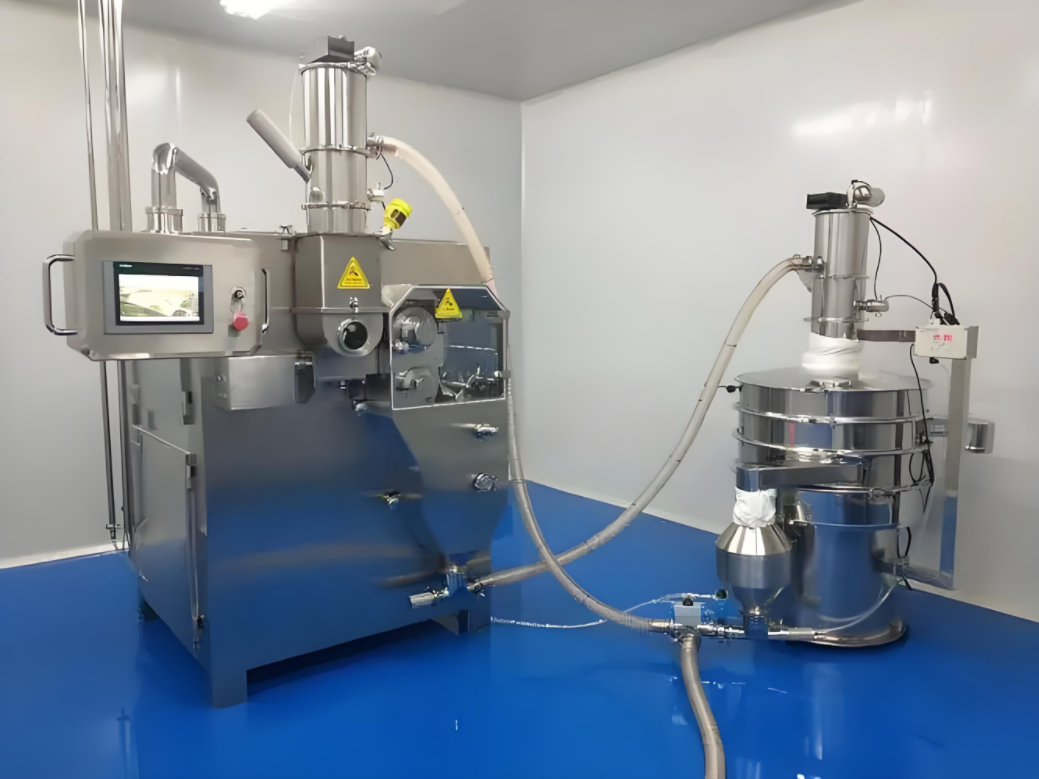Dry granulator equipment advantages
Time:2024-08-11 Visit:242
The Dry Granulator is mainly used to convert powdered materials into pellets by compression or other mechanical means, without the use of a liquid binder. It uses physical pressure rather than liquid adhesives to achieve granulation and is suitable for handling heat sensitive, wet sensitive or difficult to handle with liquid adhesives. This avoids the impact of high temperature and moisture on the material and is especially suitable for the pharmaceutical, chemical and food industries.

First, the main process of dry granulator
1. ** Feed ** : Feed the powdered material into the equipment.
2. ** compression ** : The material is compressed into sheets between the high-pressure rollers.
3. ** Crushing ** : The flake material is broken into particles.
4. ** Screening ** : Through the screening equipment to screen qualified particles, remove unqualified parts.
Two, dry granulator equipment advantages
- ** Avoid humidity problems ** : No need to use liquid adhesives.
- ** Strong adaptability ** : suitable for handling heat sensitive and moisture sensitive materials.
- ** Uniform particles ** : Uniform particles can be obtained by adjusting equipment parameters.
- ** Avoid humidity problems ** : No liquid adhesives, suitable for heat sensitive materials.
- ** Uniform particle ** : Adjustable equipment parameters to produce uniform particles.
- ** Improved safety ** : Reduce the impact of heat and moisture on the material during handling.
Third, dry granulator application field
- ** Pharmaceutical ** : For the preparation of pharmaceutical granules.
- ** Chemical Industry ** : Production of chemical raw materials and products.
** Food ** : processed food additives and nutritional supplements.
The dry granulator compresses the powder into particles by physical methods, usually involving the following steps:
1. ** Powder feed ** : Powder material enters the equipment through the feed system.
2. ** compression ** : The powder is compressed between the high-pressure roller to form a sheet material.
3. ** Crushing ** : Flake material is transformed into particles by cutting or crushing system.
4. ** Screening ** : The qualified particles are separated by the screening device and the unqualified parts are removed.





